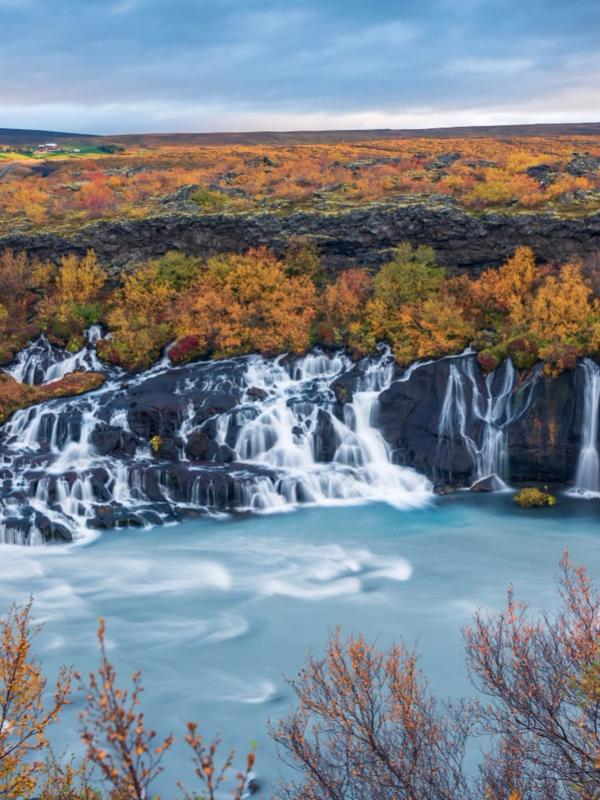
15 Best Things to Do in Iceland in October
Iceland changes in October. Summer crowds leave, prices drop, and the first hints of winter create stunning landscapes without the harsh cold of deep winter. The Northern Lights appear in darker skies, and the country takes on a golden autumn glow.
Here's my list of the best activities for October visitors, mixing popular spots with hidden gems that show Iceland's natural beauty during this special time of year.
1. Soak in Krauma Geothermal Baths
Skip the Blue Lagoon crowds and head to Krauma Geothermal Baths near Reykholt in West Iceland. Fed by Europe's most powerful hot spring, these modern baths have five hot pools, a cold plunge tub, and two saunas, all with fewer tourists and lower prices than other famous spas in the country.
Located about 60 miles (1.5 hours) from Reykjavik, Krauma costs 7,490 ISK ($59) per person. The mix of hot 38-42°C pools and October's cool air creates a perfect experience. Come early to avoid midday crowds, and bring your own towel to save money. After soaking, try the on-site restaurant's Icelandic lamb soup for the perfect warm-up.

2. Explore Hraunfossar Waterfalls
Hraunfossar (Lava Falls) offers a different kind of waterfall. Here, countless small streams emerge from under a lava field, creating gentle cascades flowing into the blue-green Hvítá River. October brings autumn colors, making the landscape even more beautiful, with red and yellow leaves framing the falls.
You can reach these falls from Reykjavik in about 1 hour and 45 minutes by car, and they're free to visit. You can get to several viewing platforms via a flat, easy path suitable for all ages. Nearby, you’ll find Barnafoss (Children's Falls), which adds a more dramatic waterfall to your visit. I recommend visiting in the morning for the best light and fewer people, and pair it with a visit to nearby Krauma Baths for a perfect day trip from the capital.
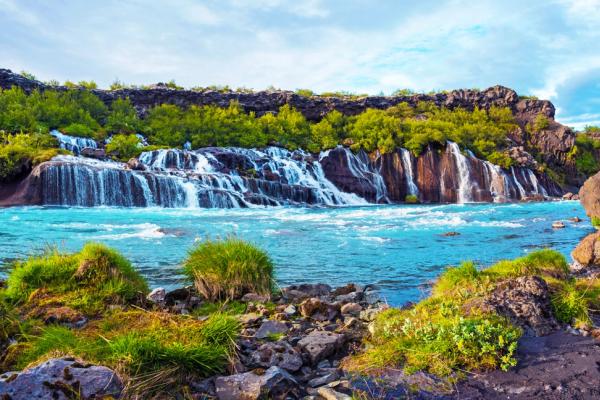
3. Discover the Fjallsárlón Lagoon
While everyone goes to Jökulsárlón, smart travelers head to nearby Fjallsárlón Lagoon for the same floating icebergs and glacier views, but without the crowds. This lesser-known lagoon is just a 10-minute drive from its famous neighbor on the South Coast, so it’s also an easy stop.
There's no entry fee, and a short 5-minute walk from the parking area brings you to the lagoon's edge. In October, you'll often have the place to yourself, especially if you arrive early. Morning light brings out the blues in the icebergs, and the black sand and mountains create a stark backdrop for photos. You can do a boat tour for around 10,500 ISK ($83), which I recommend, but the views from the shore are stunning enough and completely free.

4. Walk Behind Kvernufoss Waterfall
Hidden in a gorge near Skógar, Kvernufoss offers a similar walk-behind experience as the popular Seljalandsfoss but with far fewer visitors. The 30-meter cascade is surrounded by moss-covered cliffs that turn bright autumn colors in October.
From the Skógar Museum parking lot, a 10-minute walk along a marked trail leads to this hidden gem. The path involves some climbing and rocky patches, so wear sturdy waterproof boots. The walk behind the falls gives you a unique view, and the gorge's walls protect you from Iceland's strong winds. If you want to see more waterfalls in the South Coast, don’t leave the area without visiting Skógafoss, which is only 6 minutes away by car.
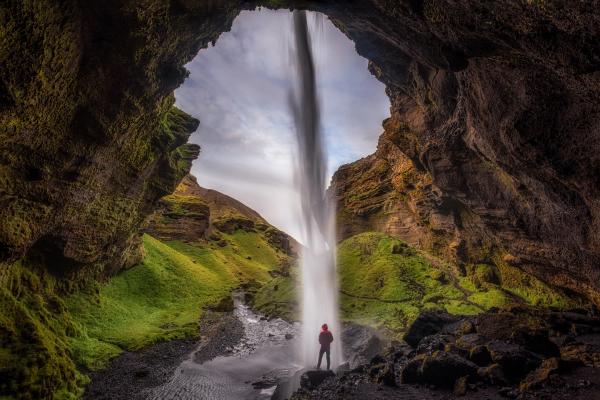
5. Spot Whales in Dalvík
Whale watching is, for me, one of the best things to do in Iceland (if you like wildlife). So, if you don’t feel like dealing with Húsavík’s crowds, head to the small fishing village of Dalvík in North Iceland instead. October has calm seas and active feeding before winter migration, increasing your chances of seeing humpbacks, minke whales, and sometimes orcas.
Tours cost around $95 and last about three hours, with a 90% success rate for sightings in October. The smaller boats (8-12 people) give a more personal experience than larger tours. While warm overalls are provided, please bring a hat and gloves to protect against October's cold sea breeze. The mountain backdrop of the Eyjafjörður fjord makes the adventure even more special. After your tour, grab a coffee at Gisli Café in Dalvík's harbor.
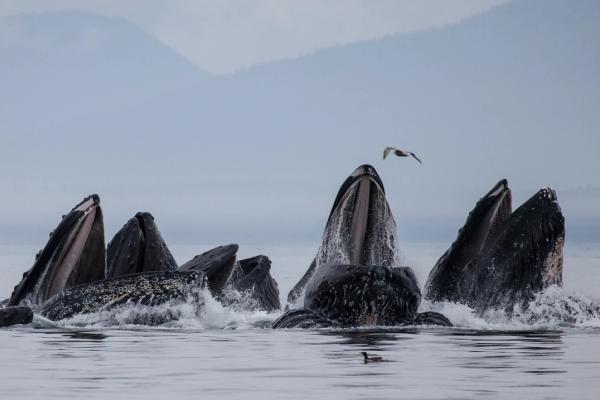
6. Trek Across Falljökull Glacier
October brings stable ice conditions for glacier walking, and Falljökull in Skaftafell offers a less busy option than the popular Sólheimajökull. The glacier's rough surface, with blue ice formations and crevasses, feels like walking on another planet.
Guided hikes cost around $157 and last 3-4 hours, requiring a moderate level of fitness. All gear is provided; however, please wear waterproof boots and warm layers, as temperatures hover near freezing. The smaller groups (6-10 people) ensure a more personal experience, and guides share insights about glacial retreat and climate change. October's soft light makes the ice's blue colors pop, making it great for photos.
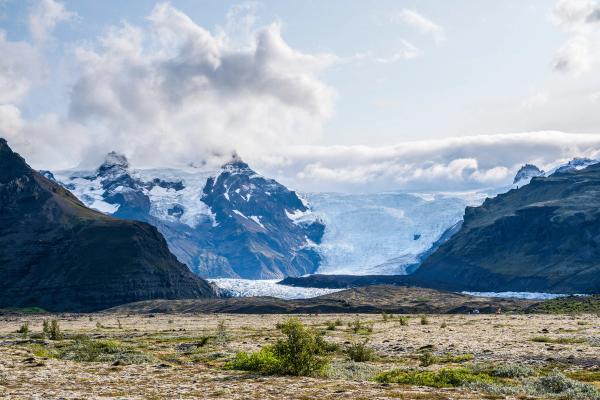
7. Go Lighthouse Hunting
Iceland's coast has many charming lighthouses that make perfect photo subjects in October's soft autumn light. Four easy-to-reach options include Grótta in Reykjavik, Akranes with its twin lighthouses, Garðskagi with wide sea views, and castle-like Knarrarós on the South Coast.
This activity costs almost nothing (Akranes has a small 300 ISK fee to climb the tower), and all spots are reachable by regular car. October's longer nights make these remote lighthouses great spots to see the Northern Lights, especially Grótta and Garðskagi, with minimal light pollution. Visit in late afternoon to catch the golden-hour light, and bring a thermos of hot chocolate for a cozy experience as the sun sets.
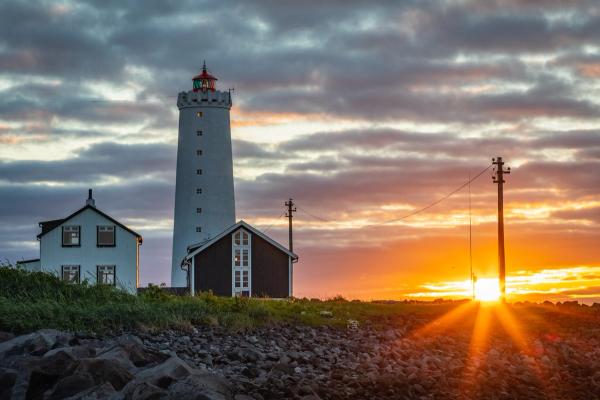
8. Join a Sheep Round-Up Observation (Rétt)
Skip the typical tourist spots and see one of Iceland's most authentic traditions. Réttir (sheep round-ups) happen every September and early October, when farmers bring their sheep down from the Highlands for winter. You'll watch as whole communities come together in a centuries-old ritual that's both chaotic and perfectly organized - hundreds of sheep being herded into circular stone pens while farmers sort them by earmarks, kids running around, and the smell of traditional lamb soup in the crisp October air.
October marks the end of the rétt season, which is perfect timing for you, since you'll get autumn colors and fewer tourists. Check visiticeland.com for the 2025 schedules, as timing varies by region. The best accessible events happen within 1-2 hours of Reykjavik, especially in areas like Þjórsárdalur in South Iceland. Most don't charge entry fees, but it’s essential to arrive early to secure a good viewing spot. Dress for a weather of around 0-10°C, with waterproof boots and warm layers. Bring snacks, as remote sites have limited facilities, and use a zoom lens for photos to stay out of the way of the farmers. This event offers you an authentic glimpse into the Icelandic community spirit that most tourists never experience.

9. Relax in Krossneslaug Geothermal Pool
For the ultimate hidden hot pool experience, make the trip to Krossneslaug in the remote Strandir region of the Westfjords. This tiny oceanfront pool sits between mountains and the Arctic Ocean, offering a quiet soak with waves crashing nearby.
The 1.5-hour drive from Hólmavík on gravel roads (4WD advised) keeps crowds away, and entry costs just 700 ISK. Facilities are basic—changing rooms but no showers—showing the wild, authentic nature of this spot. October's cold air makes the 38-42°C water feel even hotter, and the remote location is ideal for seeing the Northern Lights during clear nights. Bring hot drinks and snacks, as the nearest services are far away in Hólmavík.
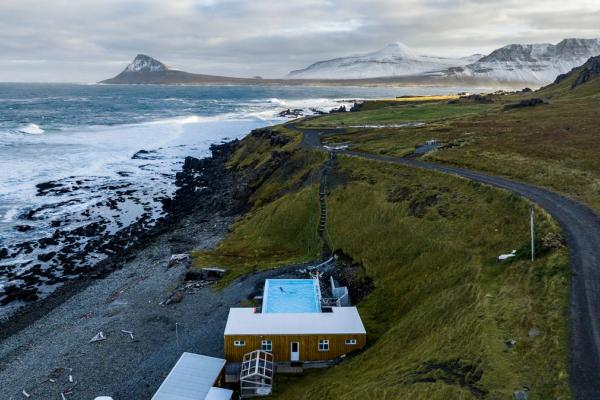
10. Delve into the Witchcraft and Sorcery Museum
October's spooky season is the perfect time to visit the unique Witchcraft and Sorcery Museum in Hólmavík. This small but interesting museum explores Iceland's grim 17th-century witch hunts, showcasing replicas of spell books, runestones, and other unusual artifacts.
Located in the remote Strandir region (3 hours from Ísafjörður or 5 hours from Reykjavik), the museum costs around 1,000 ISK ($7) to enter. Interactive displays let you try your hand at runestone carving or spell-reading. It’s quite an interactive visit. The exhibits detail how over 20 Icelanders, mostly men, were executed for witchcraft (unlike in other parts of Europe, where women were the main targets). The museum's remote location reflects the historical isolation of Strandir, where superstition was strong.

11. Join a Sea Angling Trip from Bolungarvík
Trade the crowded tour boats for an intimate fishing adventure in the Westfjords. Bolungarvík, a tiny fishing village on Ísafjarðardjúp fjord, offers some of Iceland's most authentic sea angling experiences with local experts who've been working these waters their whole lives. October is great because the waters are still relatively calm and fish have plenty to feed on, which boosts your chances of landing cod, haddock, or pollock. Plus, the fjord scenery provides a stunning backdrop.
Iceland Sea Angling offers trips for 12,000-15,000 ISK ($85-105) lasting 2-3 hours on small boats holding up to 6 people. The 5.5-hour drive from Reykjavik is long but worth it. You can also fly to nearby Ísafjörður to save time. Your guide provides fishing rods, safety gear, and warm overalls, but please bring gloves, waterproof layers, and good-grip shoes, as sea spray is guaranteed. Check vedur.is the sea conditions before your trip, and book through icelandseaangling.is. Many guides will cook your fresh catch right on the boat, giving you an authentic taste of Iceland's coastal culture that beats any meal in Reykjavik.
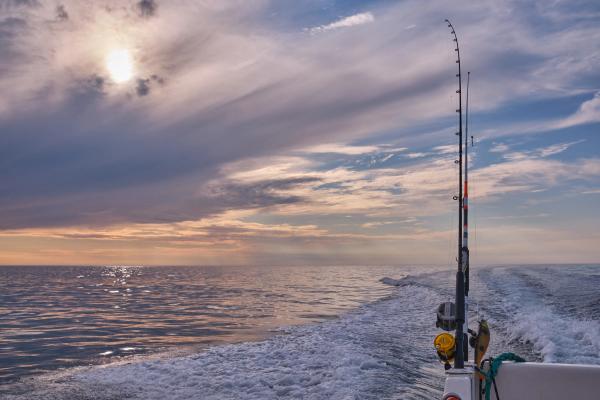
12. Hike Through Nauthúsagil Ravine
Hidden near Eyjafjallajökull on the South Coast, Nauthúsagil Ravine feels like stepping into a fairy tale. This narrow canyon features moss-covered walls, wild rowan trees with vibrant autumn colors, and a stunning waterfall at its end, all accessible via a short yet exciting hike.
The ravine is a 2-hour drive from Reykjavik, with free parking near the Stóri-Dalur farm. The 30-minute hike involves crossing a stream and using ropes, which adds a fun twist to the activity. It sounds challenging, but you don’t need advanced skills. Wear waterproof boots and bring rain gear, as October weather can make rocks slippery. The ravine's sheltered walls block the wind, making it surprisingly comfortable for hiking in October. I’d recommend that you start early to enjoy the quiet before others arrive.
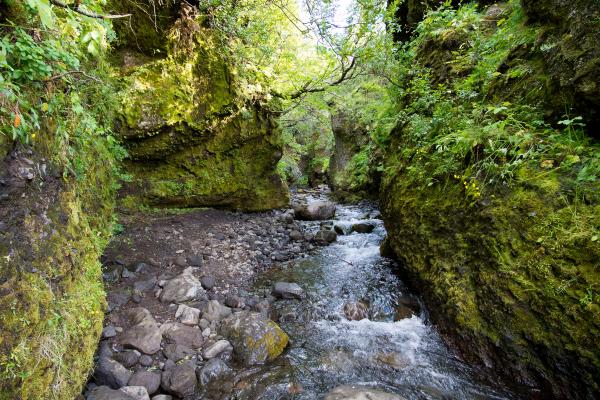
13. DIY Northern Lights Tour to Þingeyri Peninsula
Skip expensive Northern Lights tours and create your own aurora hunting adventure at Þingeyri Peninsula in the Westfjords. This accessible spot near the village of Þingeyri offers minimal light pollution and stunning fjord views, perfect for October's darker skies and aurora activity.
From Ísafjörður, it's just a 30-minute drive on paved roads to reach Þingeyri, where you can park near the village and walk 5-10 minutes to open areas along the coast. Check the aurora forecast for a KP index of 3+ and clear skies. Go after 9 PM for the best darkness. The peninsula's fjord, Dýrafjörður, reflects the lights on calm nights, doubling the show. Bring warm layers, a thermos of hot chocolate, and a tripod for photos. It’s the perfect activity if you're looking for something budget-friendly and independent.
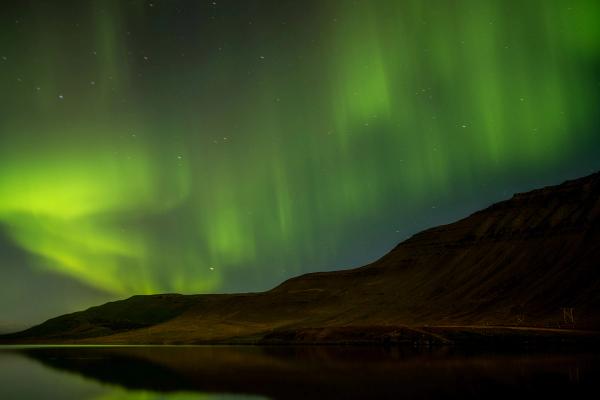
14. Explore the Egg Museum on Flatey Island
For a quirky cultural stop, visit the small Egg Museum on Flatey Island in Breiðafjörður. This small exhibit showcases a collection of bird eggs, highlighting Iceland's diverse bird population against the backdrop of a vibrant, car-free island village.
Getting to Flatey requires a 1.5-hour ferry from Stykkishólmur (about 8,600 ISK round-trip), and October is the last month to visit before winter ferry cuts. The museum itself is free, but donations are welcome, and it can be explored in 20-30 minutes. Like we mentioned earlier, October is a very quiet season, which almost ensures a nearly private island experience, with just a few locals around. Pair your visit with a walk to Flatey's lighthouse or the small church with folk-art frescoes for a full day of exploration.
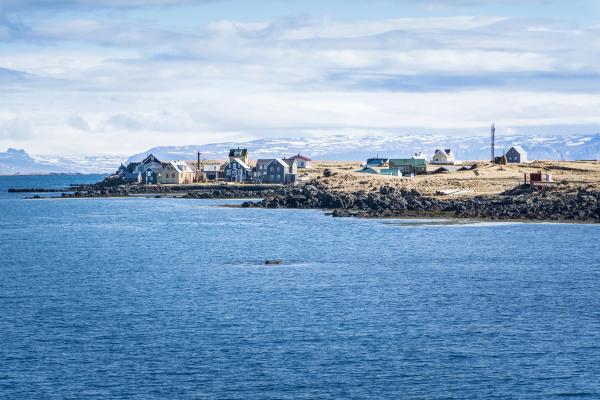
15. Photograph the Abandoned Selárdalur Farmstead
Photographers seeking unique subjects should head to the abandoned Selárdalur Farmstead in the Westfjords. In October, the crumbling turf houses and barns, set against rugged mountains, create hauntingly beautiful scenes.
Located near Bíldudalur (about 4 hours from Reykjavik), the farmstead requires no entry fee but sits on private land, so respect signs and avoid entering structures. It’s best to go in late afternoon for the golden-hour light, which is perfect for capturing the site's eerie charm. October's autumn colors, with golden grass and gray skies, create a dramatic backdrop. Nearby, there are some quirky sculptures by artist Samúel Jónsson, which add an unexpected artistic touch to the adventure.

Conclusion
October offers the perfect mix of accessibility and quiet in Iceland. The summer crowds are gone, prices have dropped, and the first hints of winter create magical landscapes without the extreme cold of deep winter. Whether you're soaking in remote hot springs, hunting for the Northern Lights, or exploring hidden ravines, Iceland in October delivers unforgettable experiences for travelers willing to go beyond the obvious attractions.
